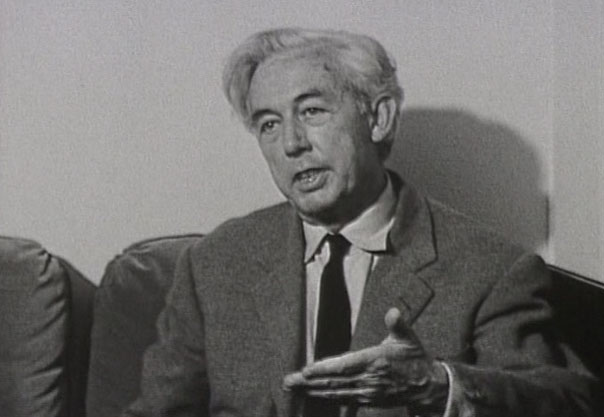Bresson on Bresson: Interviews 1943-1983, New York Review Books, 2016
by Shmuel Ben-Gad

Almost everyone, it seems, tends to view film as simply a variant of theatre, though different, of course, in that film makes it far easier to change settings and offer spectacle in terms of beautiful pictures, special effects, expressionistic camera work, and the like. The most important dissenter from this view is the French filmmaker Robert Bresson (1901-1999). His films won many awards, and he was inducted into the French Legion of Honor.
The first of his fourteen films was Affaires publiques (1934), a short surrealistic comedy. This was followed by a well-made, conventional film, Les Anges du peche (1943) about an order of nuns that tries to rehabilitate female prisoners, and the less conventional and even better made Les Dames du bois de Boulogne (1945) based upon an incident related in Diderot’s Jacques le fataliste (1945). He first attained his mature style (which film scholar James Monaco brilliantly characterizes as that of an “ascetic esthete”) in his next film, Diary of a Country Priest (1951). Based upon the novel by Georges Bernanos, no other film, before or since, has so captured the intensity of a religious inner life.
The best way to get to know Bresson’s style, of course, is viewing the films. But the films are so very different from almost any others that it will help those interested in learning more about it to read Bresson’s own thoughts. His gnomic volume Notes sur le cinematograph. (The English translation has been released under three different titles: Notes on Cinematography, Notes on the Cinematographer, and, most recently by New York Review Books, Notes on the Cimematograph.) In addition New York Review Books has also published Bresson on Bresson a selection of Bresson’s interviews edited by his wife Mylene. The interviews, in total, cover every individual film and also show Bresson expatiating on the elements of his style and the thoughts behind it.
Bresson used the bare minimum means to depict what he wanted to show. In Pickpocket (1959), for example, the central character’s sojourn in England is indicated by two shots and one brief voiceover. He eschewed expressionistic camera angles and movements. Most obviously and famously, Bresson also refused to allow acting. He believed acting was proper to the theatre, which depends on the presence of the live actors before an audience, but false to film, which does not have this means but instead uses images and sounds. What is required, Bresson maintained, is not a person acting but the unembellished image of a person.
Thus Bresson used non-actors, whom he called models. He rehearsed them repeatedly until they delivered their lines automatically, neither projecting nor suppressing emotion. He believed that the camera and tape recorder (which he calls in one of the interviews “sublime tools”), thus freed from the actors’ mask, could penetrate into the character of his models. This non-theatricality takes up much of the interviews. Bresson’s frustration with mainstream cinema (what he calls filmed theatre) is most evident in the interviews. He does not demand that such films cease being made, but thinks it unfortunate that the audience is not educated to appreciate film as an independent art form with its own methods.
The interviews in the book also deal with the other main element of his style: a rhythmic ordering of images and natural sounds so that images affect one another and are affected by, and affect, the natural sounds like colors in a painting. (Bresson earlier in life was a painter and photographer.) .
The interviews also indicate developments in Bresson. He at first rejected color because he thought it “externalizes” while his films seek to get at the inner essence of things. Later, in his last five films, he used color. He discusses this in these interviews, though no mention is made of his concomitant move away from fades to straight cuts, a move which also added power to his ellipses and made the films even more unified, The other major development that comes up in the interviews is his difficult, final eschewal of background music
Whether discussing the art of film, or his particular style, or his individual films, Bresson’s love of film and belief in its power. as well as his frustration (he was never able, for example, to make his film based upon part of the Biblical book of Genesis) comes through strongly in these interviews. The path Bresson followed, based upon his conviction regarding film’s uniqueness and unique capacities, was a brave and lonely one. His body of work, one of purity, interiority, and restrained intensity, enriches us immensely.
____________________________
Shmuel Ben-Gad is a librarian at the George Washington University.